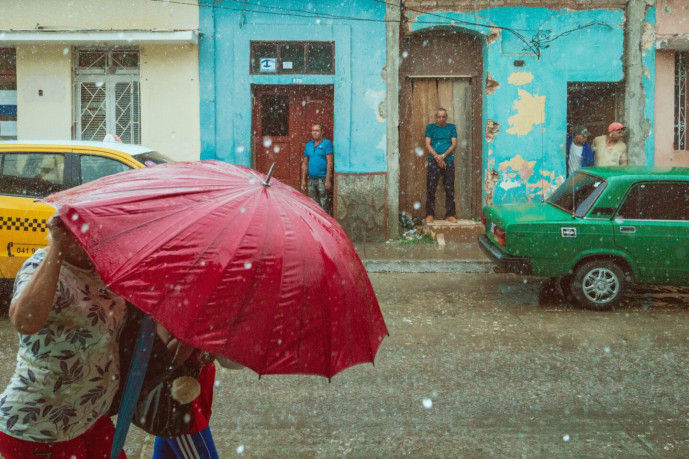Cuba Weather
Plan your Cuban journey with our informative weather guide, ensuring a comfortable and enjoyable trip to this Caribbean paradise.

Essentials
Understanding Cuba’s Climate: A Tale of Two Seasons
Cuba enjoys a tropical climate, which means it is wonderfully warm to hot throughout the year. The island’s weather is best understood through its two primary seasons: the Dry Season and the Wet Season. On average, year-round temperatures fluctuate between a comfortable 70°F (21°C) and a warm 82°F (28°C). The seawater is always inviting for a swim, with temperatures typically ranging from 79°F (26°C) to 86°F (30°C).
The Dry Season (November – April)
This period is widely considered the ideal time to visit and corresponds with the peak tourist season.
Characteristics:
- You will experience lower humidity and significantly less rainfall.
- Expect abundant sunshine and consistently clear blue skies.
- Daytime temperatures are pleasantly warm, averaging around 77°F (25°C).
- Evenings can be noticeably cooler, especially during December and January, with temperatures sometimes dropping to 65°F (18°C). We advise packing a light jacket or sweater for these moments, particularly if you are visiting Havana or Viñales.
The Wet Season (May – October)
This season is defined by hotter temperatures, much higher humidity, and more frequent precipitation.
Characteristics:
- Daytime temperatures often climb above 86°F (30°C).
- Rainfall generally arrives in the form of short, heavy downpours or thunderstorms in the late afternoon. It is reassuring to know that it rarely rains all day, so your activities can still be planned around these brief interludes, which are often followed by a return to sunshine.
- This period coincides with the Atlantic Hurricane Season.
A Special Note on Hurricane Season (June – November)
This is a critical consideration when planning travel during the wet season.
Peak Months: The highest probability of storms occurs from August through October.
What this means for you:
- The presence of the season does not mean a hurricane will definitely impact your trip; it is a matter of probability.
- It is essential to monitor weather forecasts in the days leading up to and during your travel.
- We strongly recommend obtaining comprehensive travel insurance that covers trip cancellations or interruptions due to weather. This is a standard and sensible precaution for any travel to the Caribbean during this period.
Regional Weather Variations
While the island shares a general climate, you will notice some subtle differences depending on your location.
- East vs. West: The eastern part of the island, near cities like Santiago de Cuba, is generally hotter and more humid than the western part where Havana is located.
- Coastal vs. Inland/Mountainous: Coastal areas benefit from refreshing sea breezes, which can make high temperatures feel more comfortable. In contrast, mountainous regions like the Sierra Maestra will be cooler, particularly after sunset.
Packing for the Cuban Climate: A Practical Checklist
Year-Round Essentials
- Lightweight, breathable clothing made of natural fibers like cotton and linen.
- High-SPF sunscreen (at least SPF 30+).
- Sunglasses and a wide-brimmed hat for sun protection.
- Insect repellent, particularly for evenings and excursions into rural areas.
- A reusable water bottle to ensure you stay properly hydrated.
Season-Specific Additions
For the Dry Season (Nov-Apr):
- A light jacket, fleece, or sweater for the cooler evenings.
- Long pants are also recommended for evenings.
For the Wet Season (May-Oct):
- A lightweight, waterproof rain jacket or a small travel umbrella for sudden downpours.
- Clothing made from quick-drying fabrics.
- Footwear that can comfortably handle getting wet and will dry quickly.